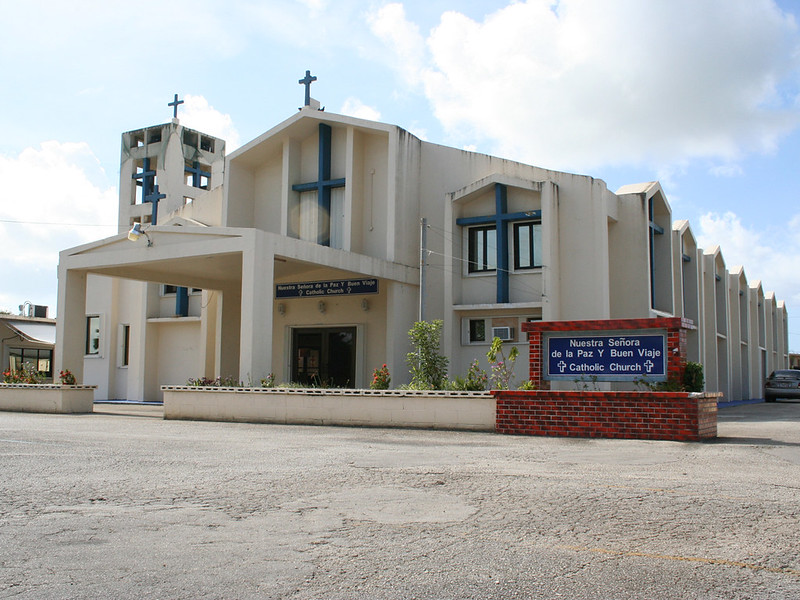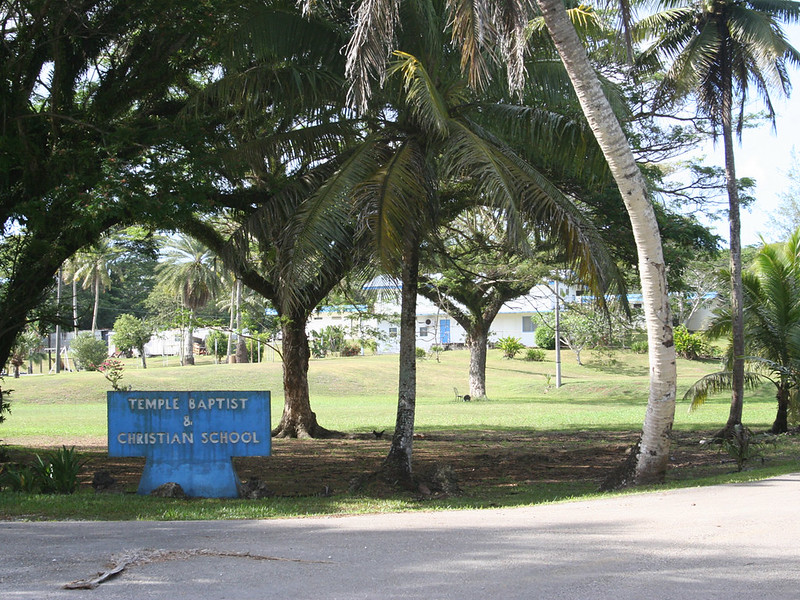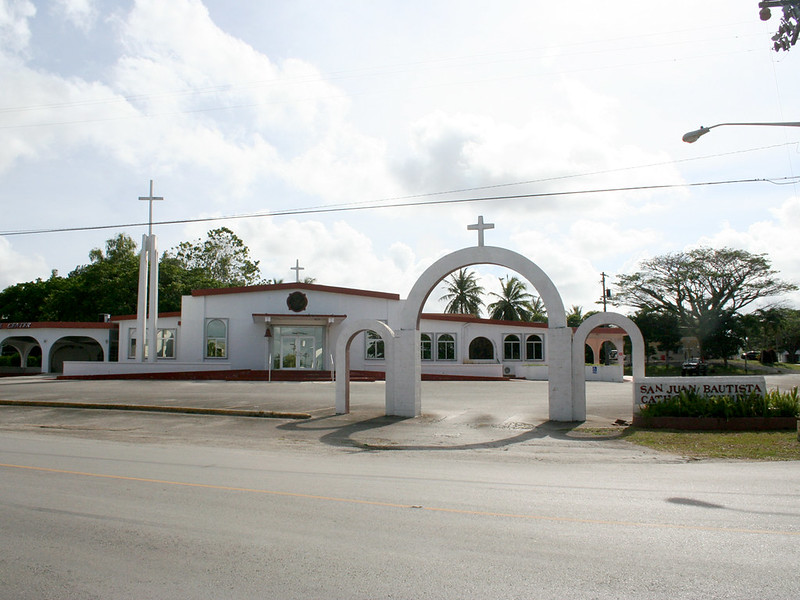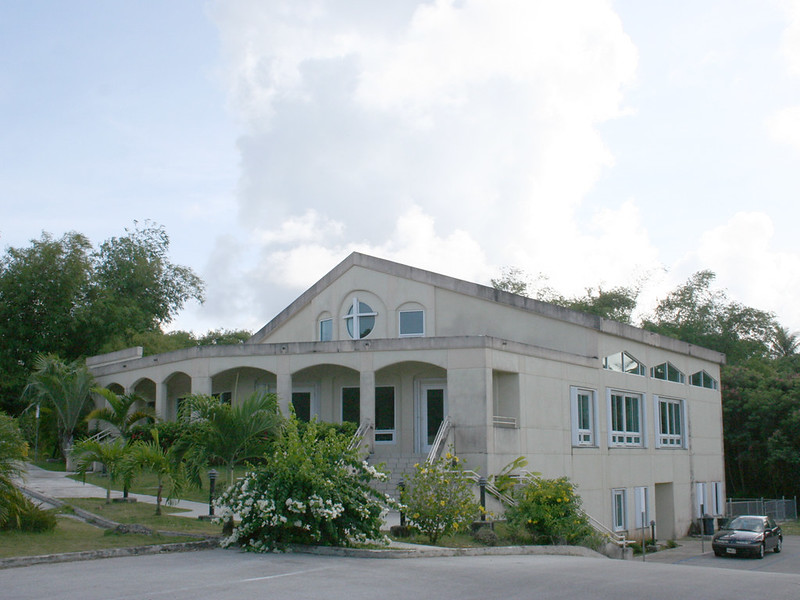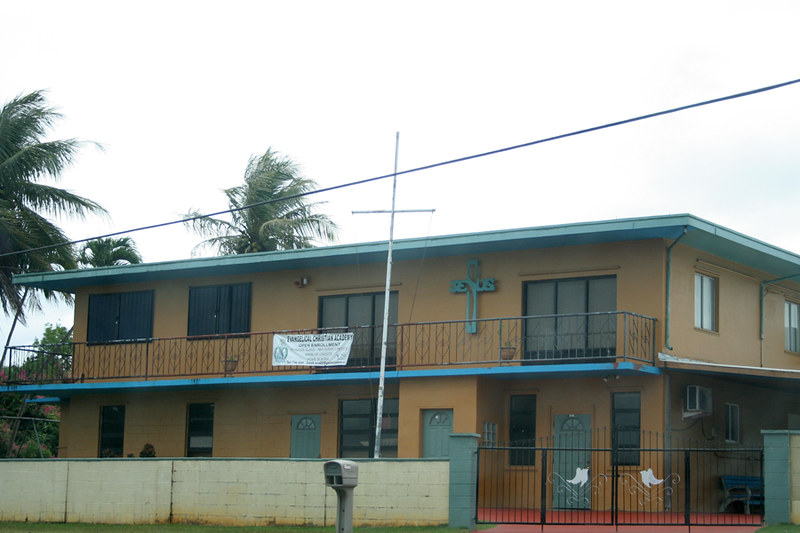Chalan Pago-Ordot (Chålan Pågu-Otdot)
Origin of village name in CHamoru
Chalan Pago is a CHamoru word that means “Pago Road.” Chalan Pago referred to the area traveled through to get from Hagåtña to Pago, which may lend to the naming of the area, which is covered with Pago trees (hibiscus tiliaceus). Pago was one of the reducción villages established by Father Diego Luís de San Vitores, who established the Catholic mission in the Marianas in the 1670s. CHamorus from throughout the Mariana Islands were resettled and concentrated into villages on Guam to enhance missionaries’ efforts.
Ordot village seems to have originated in the 19th century. The village name is derived from the CHamoru word otdot, which means “ant.” Some residents believe that the name was given to the area because the type of soil there is attractive to certain types of ants.
Population
According to the US Census in 2010, there were 6,822 people living in Chalan Pago-Ordot.
Village officials
The mayor of Chalan Pago-Ordot is Jessy “Jess” C. Gogue who began serving in 2009.
Village description
The municipality of Chalan Pago-Ordot stretches across the narrow “waist” of the island of Guam. Housing areas are built mostly along Route 4. These villages are on the dividing line between the mostly volcanic southern half of the island and the mostly limestone northern half of the island. The result is a diverse and rugged topography characterized by low hills, small valleys, wetland areas, and streams that seem to disappear into the ground. The area is covered with lush green vegetation and homes are built on flat areas of land at times next to small valleys. Some residences have also been built at the foothills of nearby mountains.
The area had long been a center of ranching for people from Hagåtña, but since World War II, it has become home to two tight-knit village communities and several new housing subdivisions.
Chalan Pago also leads to Pago Bay, where homeowners have a view of the ocean on Guam’s eastern coast. A few people have also taken advantage of mountain properties, building residences overlooking the bay.
Ordot is also the site of the island’s former landfill. In March 2008, US District Court of Guam Judge Frances Tydingco-Gatewood placed the dump under federal receivership after the local government failed to close it and build a sanitary landfill in another location as ordered by a federal mandate. An off-island solid waste management consulting firm was given full authority to take over the closure of the dump.
Over the years, village residents held protests for the dump’s closure as several homeowners living in Chalan Pago-Ordot endured decades of hardship living in close proximity to the landfill: families have been forced to evacuate their homes for periods of time when subterranean fires surfaced; after particularly heavy rains, the stench emanating from the mountainous pile of trash (the dump was originally built in a valley) would magnify; the nearby Lonfit River — which used to be a favorite swimming spot — has been heavily contaminated by run-off from the landfill; and large flies populate in the area, proving to be a particular nuisance to village residents as well as a sanitary concern for nearby schools.
Village history
Pago is an ancient settlement in Pago Bay along the southeastern coast of Guam. In the 1670s, Pago was resettled as a Catholic village, established when CHamorus were forced to leave their homes throughout the Mariana Islands during the Spanish reducción. In the 1700s, Jesuit missionaries established an agricultural station at Tachogna which encompassed much of the present-day village of Ordot.
Other ancient settlements in the area included Fagtu, Tagun, Pumud, Tinaka, Pohund, and Aguan. A typhoon and an epidemic struck the island in the 1850s, which caused massive population loss as well as the abandonment of the village of Pago. Survivors joined other villages. The area remained a popular ranching area, however, because of its fertile soil and proximity to peoples’ homes in Hagåtña. Corn was the most popular crop — although some rice, taro, and yams were grown in the wetlands. Gaddo’ and dago (types of yams) were also plentiful in the region. It was not until after World War II that people again began to build permanent houses for use as their primary residences. Initially, the villages were considered suburbs of Sinajana but in 1956, Ordot and Chalan Pago combined to become its own municipality.
In 3 August 2010, the “We are Guam, We are Ordot-Chalan Pago” village mural was unveiled. The mural is part of the Guam Visitors Bureau’s branding program, “We Are Guam.” It is located along Route 10 across from Song Market and is the 11th of 19 village murals. Artists Gregorio C. Sablan and Tina Flores, teachers from John F. Kennedy High School and George Washington High School, designed and led the community of volunteers to its completion.
Points of interest
Village map
Institutions
Agueda Iglesias Johnston Middle School
Agueda I. Johnston Middle School is located behind the San Juan Bautista Catholic Church in Ordot. In 1974, this middle school, known as the George Washington Junior High School, was renamed after the educator and civic leader Agueda Iglesias Johnston.
Apostolic Bible Fellowship
Incorporated in August 1999, the Apostolic Bible Fellowship obtained its Kongga Road property in February 2000, and constructed the church building in 2006. The church is affiliated with the United Pentecostal Church International, and is the result of the early 1980’s missionary work of Rev. and Mrs. Roy Bettis. Situated away from the busy island streets, the church is surrounded by century-old Monkeypod trees, and enjoys a peaceful island atmosphere.
Baha’i Assembly
The Baha’i Faith has been a part of the island community for over 50 years. There are 17 localities in the Mariana Islands. Members of the Baha’i Faith Assembly of Chalan Pago-Ordot share the task of hosting gatherings. The Assembly may not have a building or office but can be contacted through the main branch located in Hagåtña.
Mañelu (Big Brothers Big Sisters of Guam)
Mañelu, formerly named Big Brothers Big Sisters of Guam, is a registered local non-profit organization, which continues their mission of educating children by offering one-to-one mentoring for island youth. Under their evolved identity as Mañelu, the group has expanded their programs and services in support of their clients’ families. They offer on-site youth and family activities, and run their Micronesian Resource Center One-Stop Shop.
Dominican Child Development Center
The Dominican Child Development Center of Ordot is located across the San Juan Bautista Catholic Church. The Center was built in 1980 by Sisters Loreto Almira and Remedios Ignacio from the order of Dominican Sisters who arrived on Guam to assist in establishing Catholic schools, day cares, and homes for senior citizens.
Evangelical Christian Academy
The Evangelical Christian Academy (ECA) is located along Route 4 of Chalan Pago and has been operating for decades. ECA’s enrollment includes grades kindergarten up to 12th. The school is a member of the Association of Christian Schools International. The Academy specializes in an individualized or customized approach to education. Each student is tested and a curriculum is designed specifically for them.
Faith Presbyterian Reformed Church
The Faith Presbyterian Reformed Church is located near the Father Duenas Memorial High School in Tai. The church was dedicated in 2003 with the guidance of Pastor Neil Culbertson.
Father Duenas Memorial High School
Better known as FD, Father Duenas Memorial High School is Guam’s only all-male Catholic high school. In 1948, Guam Bishop Apollinaris Baumgartner opened this Catholic minor seminary and high school at Tai which was named in honor of Father Jesus B. Duenas. It is near this site that Father Duenas was murdered by Japanese soldiers near the end of World War II.
Infant of Prague Nursery & Kindergarten
Infant of Prague is located between Father Duenas Memorial School and the Sisters of Mercy Convent in Tai. In 1951, the Nursery was built by the Sisters of Mercy of Guam and led by Sister Mary Redempta Thomas.
Ordot-Chalan Pago Elementary School
Ordot-Chalan Pago Elementary is located down the street from San Juan Bautista Catholic Church on Judge Sablan Street. The school was built in 1997 and is known as the “Home of the Ants,” the school’s mascot.
Our Lady of Peace and Safe Journey Church
This Chalan Pago Catholic church was dedicated on 25 December 1959. It was constructed with the assistance of Naval Chaplain Father Richard Thomas Peeters and the Navy Seabees. The village fiesta is celebrated on the third week of January.
San Juan Bautista Church
Ordot’s Catholic church was a mission chapel of Sinajana until 1974. The Capuchin Order of Guam members, Fathers Kieran Hickey, Robert Phelps, and Randolph Nowak and DePaul Guerrero helped improve the present structure of the church. The church is under the order of the Archdiocese of Guam.
Sanctuary, Inc.
Sanctuary is a non-profit organization established more than thirty years ago to help the island’s troubled youth. Since its founding, Sanctuary has expanded its mission, facility and programs, providing invaluable assistance for youth and their families throughout the Island community.
Island Community Church
The Island Community Church is located on Chalan Peskadot in Tai, across Route 10 from Father Duenas Memorial High School. The church was founded in May 2004.
Recreational
Frank Perez Park (Pago Bay)
Although a very small park, the Frank Perez Park is the only area within Pago Bay that provides easy public access to the shoreline of Pago Bay. Fishermen can often be found launching their small boats to fish or wading the waters of the bay with their talaya nets or fishing poles. Just south of the Frank Perez Park are Japanese bunkers that can be seen along the shoreline; the bunkers were built during World War II as part of the Japanese defenses within Pago Bay.
Chalan Pago-Ordot Village Mural
The “We are Guam, We are Chalan Pago-Ordot” village mural is located along Route 10. It is part of the Guam Visitors Bureau branding project “We Are Guam.” The mural is filled with imagery and icons of the village history and community. The artists of the mural were Greg Sablan, Jr. and Tina Flores.
Village mayors/commissioners
Mayors/Commissioners
- Jessy “Jess” C. Gogue, Mayor, 2009 – Present
- Pedro I. Borja, Mayor, 2005-2008
- Vicente I. Aguon, Mayor, 2001-2005
- Roseanna San Miguel, Mayor, 1997-2001
- Vicente S. San Nicolas, Commissioner/Mayor, 1975-1997
- Francisco C. Carbullido, Commissioner, 1969-1975
- Thomas B. Anderson, Commissioner, 1964-1969
- Francisco LG Valenzuela, Commissioner, 1956-1964
Assistant Commissioner
- Francisco LG Valenzuela, Assistant Commissioner (under Sinajaña), 1952-1956
| Editor’s note: | The preceding list was provided by Konsehelon Mahot Guåhan/the Mayor’s Council of Guam. |
|---|
For further reading
Beaty, Janice J. Discovering Guam: A Guide to its Towns, Trails and Tenants. Tokyo: Tokyo News Service, 1967.
Freycinet, Louis Claude Desaulses de. An Account of the Corvette L’Uraine’s Sojourn at the Mariana Islands, 1819. Translated by Glynn Barratt. Saipan: Commonwealth of the Northern Mariana Islands Division of Historic Preservation, 2003.
Hunter-Anderson, Rosalind, and Darlene Moore. A Study of Eight Post-World War II Resettlement Villages on Guam. GMF: Micronesian Archeological Research Services, 2006.
Mayors Council of Guam. “MCOG – Mayors Council of Guam.”
Onedera, Peter R., ed. Nå’an Lugåt Siha gi ya Guåhan (Guam Place Names). Hagåtña: Chamorro Language Commission, 1988.
Rogers, Robert. Destiny’s Landfall: A History of Guam. Honolulu: University of Hawai`i Press, 1995.
San Juan Bautista Church. 25th Silver Anniversary: June 25, 1969-June 25, 1994. Ordot: San Juan Bautista Church, 1994.
Know my island- Know my history
The Young Maidens That Saved Guam
The narrowness of central Guam is part of local folklore. Legend has it that a giant fish once tried to eat the island of Guam and began chomping the land away at Pago Bay and Hagåtña Bay. To stop the fish, young women used their long hair to weave a magical net to catch the fish.
Village fiestas
Ordot celebrates San Juan Bautista’s feast day on 24 June. Chalan Pago celebrates two fiestas: Our Lady of Peace and Safe Journey takes place on the third week of January while the Sacred Heart of Mary takes place on the second Friday of June.
Regions and traditional place names
- Ordot: Tachogna
- Chalan Pago: Chilenko, Maimai, Pago, Santa Cruz, Asinan
